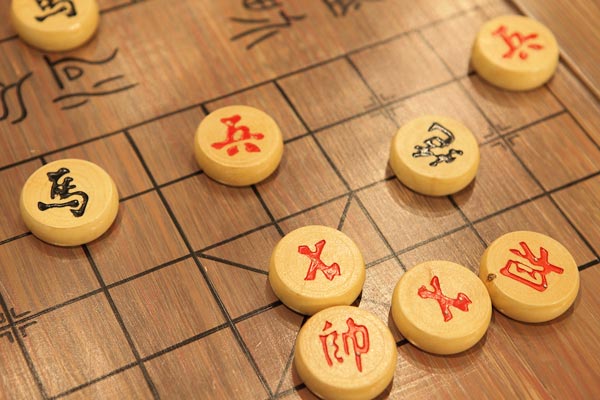Paper-cutting (Zhongyang paper-cutting), traditional art of Zhongyang County, Shanxi Province, is one of the national intangible cultural heritages.
Shanxi is located on the east bank of the Yellow River, with the Fen River running through it, and the Dingcun people lived along the Fen River, creating the Dingcun Culture. Yao, Shun, Yu and the Spring and Autumn and Warring States dynasties left rich cultural relics in Shanxi. Zhongyang paper-cutting is connected with the local traditional folk culture, which takes the local folk beliefs, seasons, rituals, myths and legends as the main content of expression, among which there are decorative patterns with fish, frogs, snakes and rabbits as the theme, as well as folk paper-cutting to match the seasons and rituals of life, and paper-cutting with folk myths as the subject matter.

On May 20, 2006, paper-cutting (Zhongyang paper-cutting) was approved by the State Council of the People's Republic of China to be included in the first batch of national intangible cultural heritage list, item number Ⅶ-16.
Paper-cutting is a kind of hollow art, which visually gives people the feeling of transparency and artistic enjoyment. Its carrier can be paper, gold and silver foil, bark, leaves, cloth, leather, leather and other sheet materials. Paper-cutting is a folk art form with a long history and wide circulation in rural China. As the name suggests, paper-cutting is the use of scissors to cut paper into a variety of patterns, such as window, door paper, wall flowers, ceiling flowers, lanterns and so on. The emergence and spread of this folk art has a close relationship with the festive customs of rural China. During festivals or wedding celebrations, people put beautiful and brightly colored paper cuttings on snow-white windowpaper or bright glass windows, walls, doors and lanterns, and the festive atmosphere is rendered very rich and festive.

Paper-cutting has many contents and a wide range of meanings. Auspicious and peaceful motifs are expected to be auspicious to avoid evil; dolls, gourds, lotus flowers and other motifs symbolize many children, Chinese farmers believe that more children will be more blessings; poultry and livestock and fruits, fish and insects, etc. because of the close relationship with the life of farmers, is also an important content of paper-cutting performance. As a folk art of paper-cutting, has a strong regional characteristics: Shaanxi window style simple and bold; Hebei and Shanxi paper-cutting beautiful and colorful; Yixing paper-cutting gorgeous and neat; Nantong paper-cutting beautiful and exquisite. Although paper-cutting is easy to make and simple in shape, it is the concentration and exaggeration of many forms of folk art in rural China because it can fully reflect the connotation of the people's life and has a strong folklore character. From the understanding of paper-cutting, one can conveniently understand other aspects of Chinese folk art.

Pre-Tang Dynasty
Paper was invented in the Western Han Dynasty (6th century B.C.), and the art of paper-cutting could not have appeared before that, but at that time, people used thin sheets of material to make handicrafts by hollowing out and carving techniques, which had been popular as early as before the emergence of paper, i.e., carving, skeletonizing, picking, carving, and shearing techniques on gold leaf, leather, silk, and even cutting patterns on leaves. The Historical Records of the cutting of the Tong Feng Di described the early Western Zhou Dynasty King Cheng with the sycamore leaves cut into the “Gui” given to his brother, sealed Ji Yu to Tang as a marquis. During the Warring States period, there is leather skeletonization, (Hubei Jiangling Wangshan one of the excavated artifacts of the Chu Tomb), silver foil skeletonization carving (Henan Huixian solid surrounding the village of one of the excavated artifacts of the Warring States ruins), are the same as paper-cutting withdrawal, their emergence for the formation of folk paper-cutting to lay a certain foundation.

The North and South Dynasties period “Mulan Diction” in the poem “to the mirror to paste flowers yellow”. The earliest discovery of paper-cutting in China is the discovery of five paper cuttings of flowers from the Northern Dynasties (386-581 AD), which were unearthed near the Flaming Mountain in Turpan, Xinjiang. These paper cuttings, which use repetitive folding and a treatment in which the images do not obscure each other.




